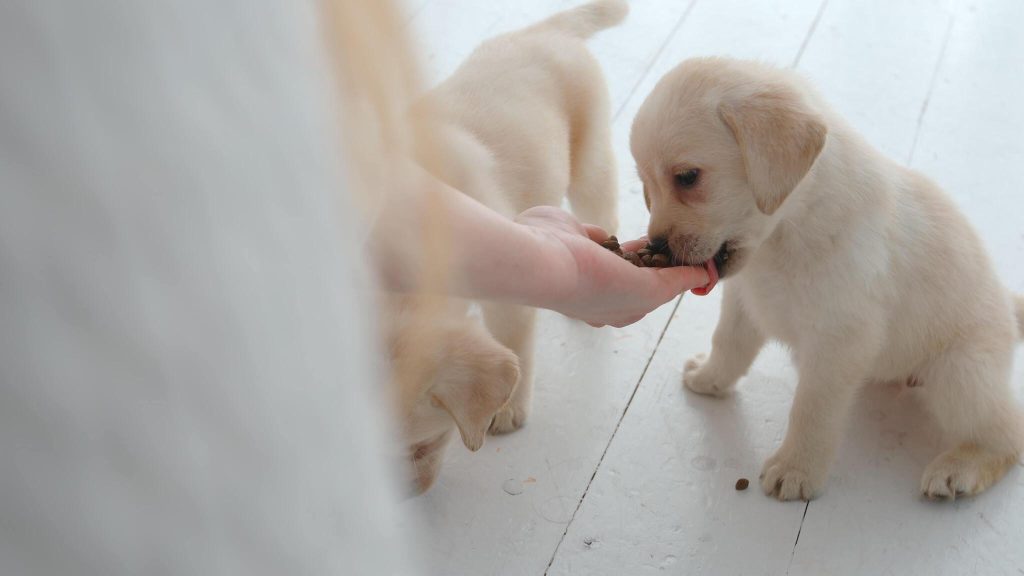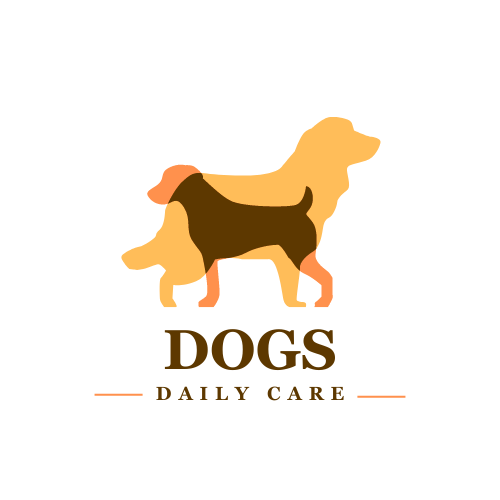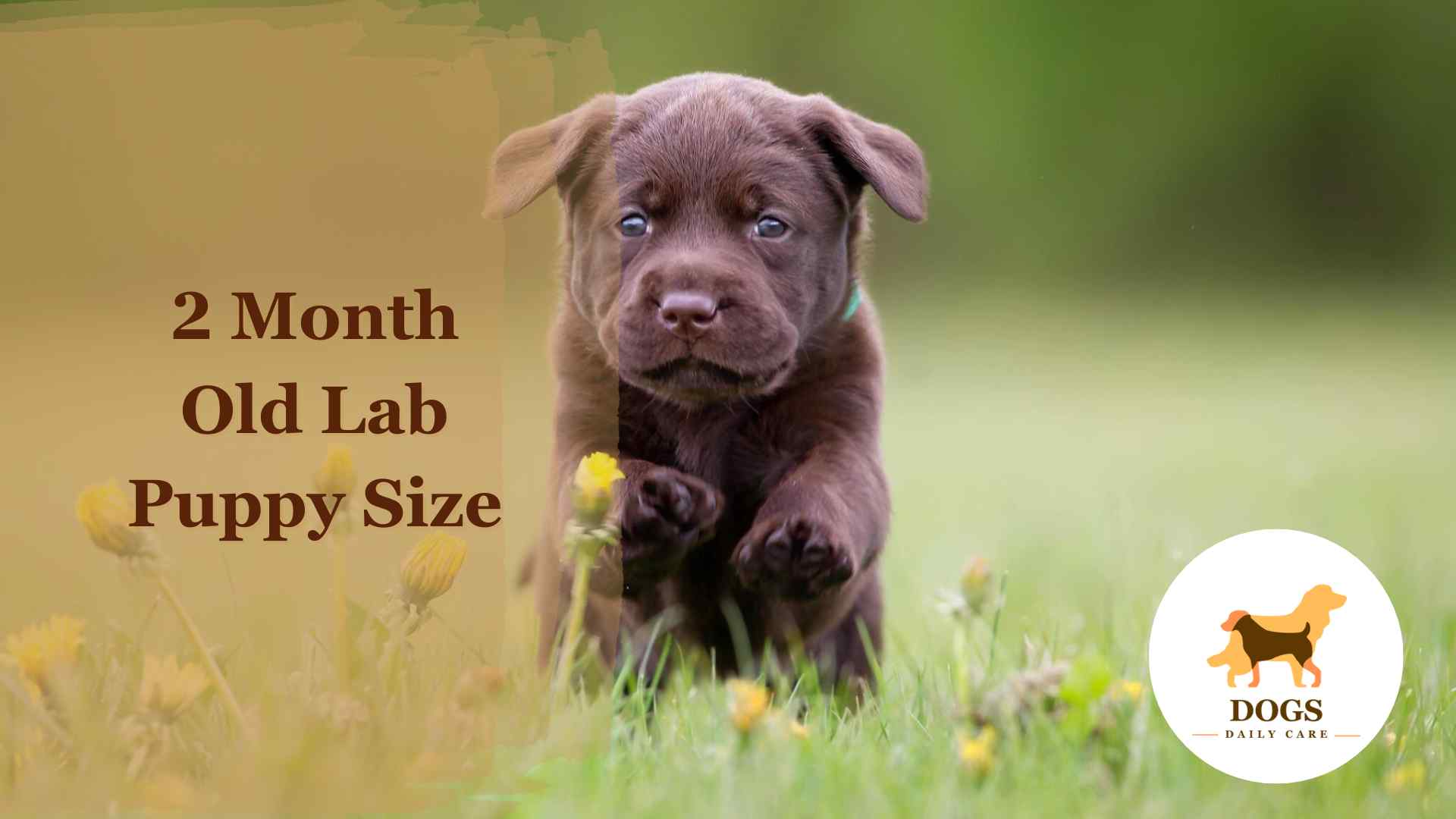2 Month Old Labrador (Lab) Puppy Size – All You Need To Know
Labrador Retrievers are not just one of the most popular dog breeds in the world; they are symbols of companionship and reliability, cherished by families and individuals alike. Understanding the growth and development of a Labrador puppy is crucial for any pet owner, as these early months lay the foundation for their future health and behavior.
For a new Lab parent, keeping track of your puppy’s size at various stages, especially at the critical age of two months, is both exciting and essential. This period is marked by rapid growth, making it an interesting phase to observe and document.
As your furry friend embarks on this journey of growth, it’s important to know what constitutes a healthy size and development pattern for a Lab puppy. This knowledge not only helps in ensuring they are on the right track but also aids in identifying any potential health issues early on. In this blog post, we’ll delve into what you can expect in terms of size for your 2-month-old Lab puppy, providing insights and tips to ensure their optimal growth and well-being.
Typical Size of a 2 Month Old Lab Puppy
When you bring a Lab puppy into your home, one of the first questions that come to mind is, “How big should my puppy be at this age?” At two months old, a Labrador Retriever puppy is in the midst of a significant growth phase. The size can vary, but there are general averages to help guide you. Here’s a simple table to show you what to expect:
Remember, these figures are averages. Some puppies may be slightly smaller or larger and still be perfectly healthy. Factors like genetics, diet, and overall health can influence a puppy’s size.
Understanding the typical size of your 2-month-old Lab puppy helps you monitor their growth. If your puppy falls within these ranges, they are likely following a normal growth pattern. However, every puppy is unique, and slight variations are perfectly normal. Always consult your vet if you have concerns about your puppy’s size or growth rate.
Factors Influencing Growth
Understanding what affects your Lab puppy’s growth is key to ensuring they develop healthily.

Here are the main factors:
Genetics and Parental Size
Just like humans, a Lab’s size is heavily influenced by its parents. If the parents are larger or smaller than average, your puppy is likely to follow suit. Genetics play a significant role in determining the overall size and growth rate of your Lab puppy.
Nutrition and Diet
A balanced diet is vital for your puppy’s growth. Puppies need a diet rich in proteins, vitamins, and minerals to support their rapid development. Overfeeding or underfeeding can lead to health issues, so it’s important to follow recommended feeding guidelines.
Exercise and Activity Levels
Regular exercise is essential for a healthy growth pattern. It helps in building strong bones and muscles. However, too much exercise can be harmful to a growing puppy, so it’s important to find a balance. Short, gentle play sessions are best for young puppies.
Environmental Factors
Living conditions and climate can also impact a puppy’s growth. For example, puppies in colder climates might develop a thicker coat.
Remember, each puppy is unique. While these factors guide growth, variations are normal. Regular check-ups with your vet will ensure your Lab is on the right track. Monitoring your puppy’s growth helps in understanding their specific needs and making any necessary adjustments to their care routine.
Health and Development Considerations
Caring for a 2-month-old Lab puppy involves more than just watching them grow.

It’s about ensuring they develop healthily. Here’s what to keep in mind:
Balanced Diet for Optimal Growth
Puppies need the right balance of nutrients to grow strong and healthy. High-quality puppy food, rich in proteins and essential vitamins, is crucial. It’s important not to overfeed or underfeed your Lab, as proper portion control is key to avoiding health issues like obesity or malnutrition.
Recognizing Healthy Weight
Knowing what a healthy weight looks like for your puppy is important. They should be neither too thin nor too chubby. You should be able to feel their ribs but not see them. A well-proportioned body with a visible waist is a good sign of a healthy weight.
Regular Veterinary Check-ups
Regular visits to the vet are essential. These check-ups help track your puppy’s growth and overall health. The vet can also guide you on vaccinations, deworming, and any specific health concerns for your Lab puppy.
Monitoring Development Milestones
Apart from physical growth, look out for developmental milestones. These include socialization, learning to respond to basic commands, and house training. Early training and positive experiences help in developing a well-adjusted adult dog.
Caring for Your Growing Lab Puppy
Raising a healthy Lab puppy involves more than just love and cuddles. Proper care is essential during their rapid growth phase. Here are some key aspects to consider:
Proper Nutrition
Feeding your Lab puppy the right food is crucial for their development. Choose high-quality puppy food recommended for large breeds. It should be rich in proteins and essential nutrients. Follow the feeding guide on the food packaging or consult your vet to determine the right amount.
Regular Exercise
Puppies need exercise to build strong muscles and bones, but it’s important not to overdo it. Short, playful sessions of exercise are best for young Labs. Avoid intense or prolonged physical activity as it can strain their developing bodies.
Training and Socialization
Early training and socialization are vital for your Lab’s overall development. Simple commands like sit, stay, and come are great starting points. Expose your puppy to different people, pets, and environments to help them become well-adjusted adults.
Routine Veterinary Care
Regular vet visits are important to monitor your puppy’s growth and health. This includes vaccinations, deworming, and any other health concerns. Your vet can also provide personalized advice for your puppy’s care.
Remember, every Lab puppy is unique, and their needs can vary. Stay observant and responsive to your puppy’s behavior and health. If you have any concerns or questions, your vet is the best resource for advice.
When to Be Concerned
While Labrador puppies are generally robust and healthy, it’s important to be vigilant for signs that may indicate a problem. Here’s what to watch out for:
Underdevelopment or Health Issues
If your Lab puppy is significantly smaller than the average size for their age, or if they’re not gaining weight as expected, it could be a sign of underdevelopment. Look out for symptoms like lethargy, loss of appetite, or unusual behavior.
Overfeeding and Obesity Risks
On the flip side, excessive weight gain is a concern too. Obesity in puppies can lead to health problems later in life. If your puppy is gaining weight too quickly, or if they feel overweight (you can’t easily feel their ribs), it’s time to reassess their diet and exercise routine.
Consulting a Vet
If you notice any worrying signs, or if your puppy is not meeting growth milestones, it’s important to consult your veterinarian. They can assess your puppy’s health, provide guidance, and address any specific concerns you may have.
Remember, catching issues early can make a big difference in treatment and outcome. Regular vet check-ups and staying informed about your puppy’s expected growth patterns help you stay on top of their health.
Frequently Asked Questions (FAQs)
Q1. How fast will my Lab puppy grow?
A: Lab puppies grow rapidly in their first six months, with most of their growth occurring in the first three months. The rate slows down as they approach their first year.
Q2. What is the average size of a full-grown Labrador?
A: A full-grown male Lab typically weighs between 65-80 pounds and stands about 22.5-24.5 inches tall at the shoulder. Females are slightly smaller, usually weighing 55-70 pounds and standing 21.5-23.5 inches tall.
Q3. How can I tell if my Lab puppy is overweight?
A: A healthy puppy should have a slight waist and you should be able to feel their ribs without a thick layer of fat. If your puppy appears round or you can’t easily feel their ribs, they might be overweight.
Q4. How often should I feed my 2-month-old Lab puppy?
A: At 2 months old, it’s recommended to feed your Lab puppy three to four times a day. Ensure you’re following the portion guidelines for their age and size, as indicated on the puppy food packaging or advised by your vet.
Q5. When do Lab puppies start to calm down?
A: Labrador Retrievers are known for their energy and playfulness, especially in their puppy years. Most Labs start to calm down and become less hyperactive around the age of 2 to 3 years, as they transition into adulthood.
Conclusion
In the journey of raising a Labrador puppy, understanding their growth patterns and development stages is crucial. This not only ensures that your furry companion is healthy and thriving but also strengthens the bond between you and your pet. Remember, each Lab puppy is unique, and while growth charts and guidelines are helpful, they are just that – guidelines.
Observing, understanding, and responding to your puppy’s individual needs is what truly makes a difference. As you watch your Lab puppy grow, cherish each moment and milestone, and provide them with the care and love they deserve.
The key to a happy, healthy Lab lies in balanced nutrition, appropriate exercise, and regular vet check-ups. Always be vigilant for any signs that may require attention, and don’t hesitate to seek professional advice when needed. Your role as a responsible pet owner is pivotal in shaping the life and health of your Lab puppy.
With the right care and attention, your 2-month-old Lab will grow into a strong, loving, and loyal companion, bringing joy and laughter to your home for years to come.







